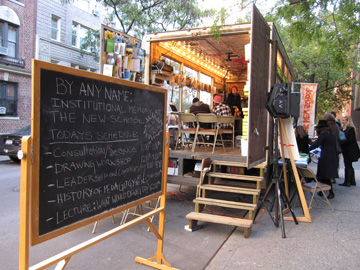
“By Any Name: Institutional Memory at The New School,” installation view at The New School, October 2009 .
For six years, Carin Kuoni has been director of the Vera List Center for Art and Politics at The New School in New York City. I wanted to pose my five questions to Kuoni because I see her as someone truly in the middle of a discourse about how art may affect the public sphere as that discourse continues to take shape and evolve.
The Vera List Center (VLC) has consistently presented programs that have brought culture workers together across disciplines to discuss a broad range of topics and problems related to cultural politics and aesthetics. Two of the events that I have attended at the VLC, which I found overwhelmingly thoughtful and compelling, were a conversation in the Fall of 2009 between Galit Eilat, a curator for the Center for Digital Arts in Holon, Israel; Chen Tamir, director of the Queens-based Flux Factory; and Reem Fadda, a Palestinian art historian currently employed by the Guggenheim. During this event, Eilat and co-presenters discussed the Center for Digital Art’s project for a Mobile Archive, a traveling archive of DVDs showcasing work by artists in the Middle-East intended to travel across cultural, national, and symbolic boundaries. The event made me think in crucial ways about how archives may intervene in the Middle-Eastern conflict, and how art may play a role in promoting cultural understanding and dialogue faced with impasse.
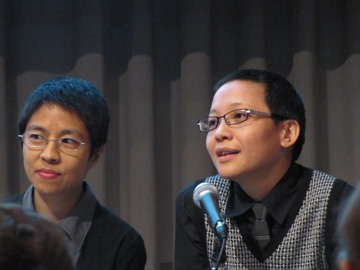
“It Happened Tomorrow: Probabilities, Predictions and Prophecies,” Lin + Lam Fellowship project presentation. Lana Lin (left) and H. Lan Thao Lam.
More recently this fall, I was able to attend the launch of Lin + Lam’s online archive project, Change Encounters, which offers interviews with workers from a broad range of disciplines speculating on social transformation, and which is part of VLC’s current program focus on Speculating on Change. During this particular presentation, Lin + Lam, who developed this project during their 2009-2010 Vera List Center fellowship, presented materials from the archive and read their playful musings about “chance” and “coincidence.” I also heard talks from a philosophy professor who researches affect, a writer who had published a book about the history of the Ouija board, and a person who had worked for a psychic hotline.
Something unique about the VLC – and Kuoni’s approach as a curator (as you will see below) – is the extent to which she has thought through the ramifications of her programming and the VLC’s relationship both within the larger institution of The New School as well as the institutions and communities with which it has worked. I particularly admire that the VLC’s events tend to relate and build upon one another and reflect a curatorial ethos. I also admire very much the evolution of the VLC from strictly organizing programs and events towards more recently producing curricular documents (textbooks, anthologies) and creating a fellowship program intended to bring scholars, teachers, and artists to the university to participate in programs and curriculum.
For universities, institutions, and groups wishing to explore models for programming and curriculum, they would be well advised to pay close attention to Kuoni’s past and ongoing work at the VLC.
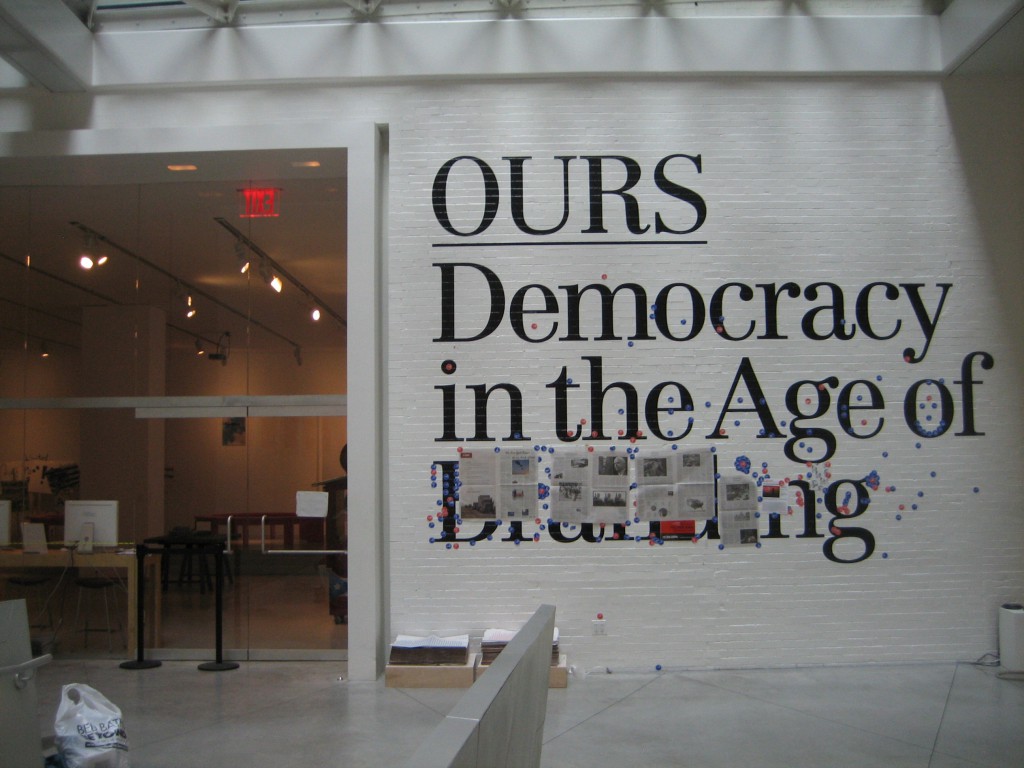
“OURS: Democracy in the Age of Branding” at Parsons The New School for Design, 2008-2009. Entry wall to Kellen Gallery.
5 Questions with Carin Kuoni
1. What’s the history of your involvement with the Vera List Center for Art and Politics?
A disparate collection of stops along a curatorial pathway shaped by seemingly incongruous experiences: early on, for instance, the encounter with one of Jenny Holzer’s Truisms, carved into an Alpine rock at an altitude of 10,000 feet – powerful in absolute solitude. Group Material’s Project on Democracy at the old Dia Art Foundation space in SoHo, just as the art world was returning to the area from the gentrified LES. The Living Museum at Creedmoor Psychiatric Center, at the time one of the largest psychiatric facilities in the country and a town unto itself with an entire abandoned building (and lots of patients) committed to art through the initiative of Polish artist Bolek Greczynski. There was Fashion Moda. And Tim Rollins & K.O.S. And Seven Thousand Oaks by Joseph Beuys.
Increasingly, the puzzle became: how to construct arguments for art’s significance to the everyday when immediate concerns about poverty, racism, the privatization of the public sphere, xenophobia, or environmental pollution dominate. How to create – and legitimize – a space of reflection and pause, freedom or respite, to allow for critical thinking? Institutionally, there was first the Swiss Institute, an independent cultural center that I directed for five years and filled, for instance, with a Russian artists’ installation (Inspection Medical Hermeneutics), explosives (Gregory Green), chocolate, or 19th century paintings of Swiss farm maids to both defy and embrace expectations, and to challenge assumptions about culture, citizenship, and identity.
Then came Independent Curators International, an agency for the development, production, and dissemination of curatorial ideas that frames, through exhibitions, pertinent issues in society. There I was Director of Exhibitions. We produced Komar & Melamid’s Most Wanted project on democracy in art; a retrospective of Mark Lombardi’s diagrammatic drawings of the complete intertwinement of corporate and political entities, and lots of other shows on new media and more, albeit always out of an office, without ever seeing the exhibitions.
The Vera List Center is the place where art can be experienced, practiced, studied, and disseminated: kind of ideal. I arrived here six years ago.
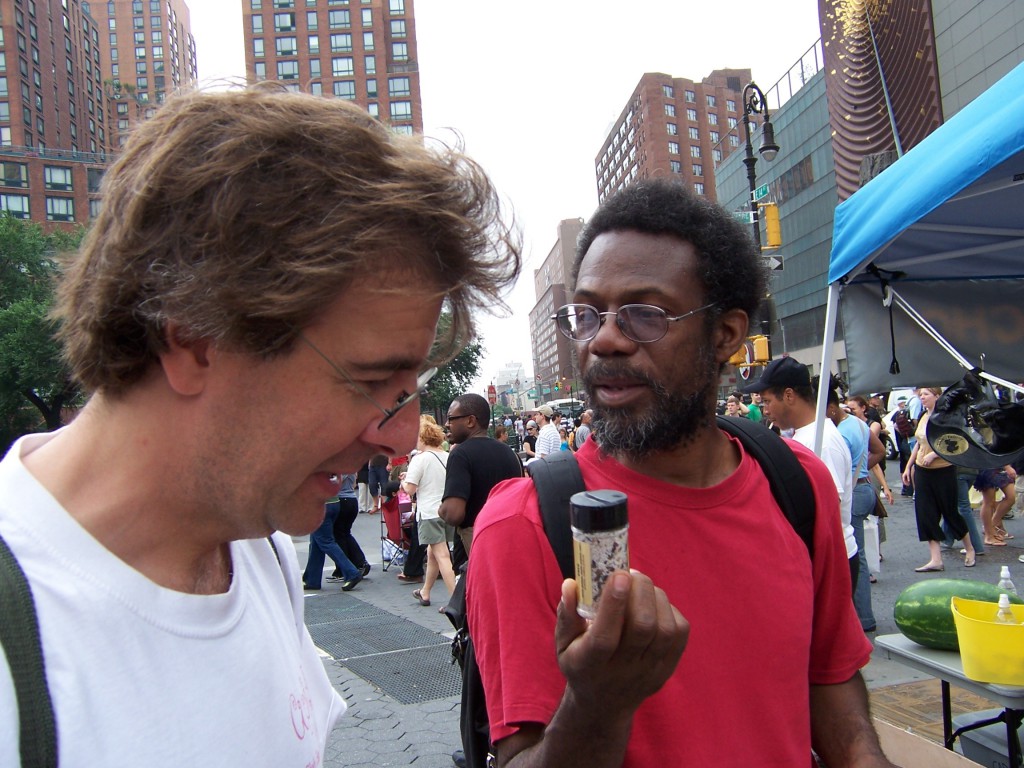
William Pope.L, "Black Factory," 2008. Passerby (with William Pope.L on the right) @ Union Square. Courtesy Carin Kuoni.
2. Why do you feel there is a need for organizations such as the VLC, which provides a forum for many of our politically most astute artists, thinkers, and scholars?
You provide the answer yourself: the center is needed because it provides a forum precisely for such people – who, by the way, include an extremely sophisticated audience. Different from, say, ten years ago, the approaches we showcase – interdisciplinarity, design, and curatorial activities as critique; practical application of theory; long-term community investments and pedagogy as critique; distributed creativity and diffuse authorship – are today common sense. In research, policy, and art, the singular undertaking without consideration and infiltration of context is simply no longer possible. Yet there is still no other organization that in name and practice is exclusively committed to examining the intersection of art and politics, and does so with a public mandate. I think it’s extremely important to advance understanding around these issues with a sense of public accountability.
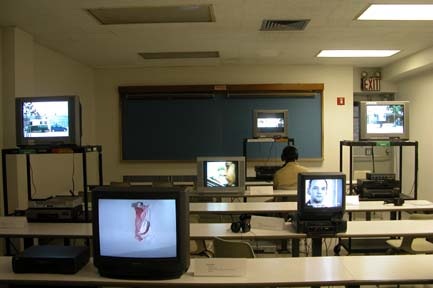
“Identify! or Studies on the Political Subject,” 2004. Two-day exhibition in unoccupied classrooms, curated by Andrea Geyer. Courtesy Carin Kuoni.
3. Are there other projects, people, and/or things that have inspired your work with the Vera List Center (past and present)?
There are many of them. 16beaver for the consistency and persistence, economy of scale, and fine sensitivity to pressing issues. The Center for Urban Pedagogy for translating aesthetics into political tools (that are not propaganda). A long-defunct magazine in Switzerland, Der Alltag (the everyday), for focusing on the basics, the quotidian. ICA Philadelphia for its fearless and beautiful exploration of everything that’s tangential to art (plus art itself). Raqs Media Collective in Delhi; The Change You Want to See Gallery, Brooklyn; Index Stockholm; Shedhalle Zurich; the International Center for Photography, New York.
4. What have been your favorite projects to work on and why?
Among the staccato of lectures, panels and discussions, there have been programs that have stretched, expanded, and contracted over time. That long-term engagement with fluctuating degrees of intensity has been particularly rewarding, because it has stayed fresh and surprising. Usually a topic of some political and cultural urgency guides these curatorially conceived explorations.
Our fellowship initiative falls within those parameters, where fellows, depending on their appointments, teach, create, or show work. Our publications function similarly, mining the proceedings of previous public programs to frame a further discussion – on the pages of books – around specific topics. The first one, edited by sociologist Aleksandra Wagner with artist Matthew Buckingham, looked at notions of forgiveness, the second one (edited by artist Walid Raad and anthropologist Vyjayanthi Rao) will examine speculation.
A number of one-time events also offer that reflective pause — for instance, one called “Hot Enough?” that looked at the effectiveness of artistic protests against the 2004 Republican National Convention in New York, four weeks after the fact. Another was a series of events on urbanism, immigration, and culture, produced in collaboration with the Bronx Museum on the 100th anniversary of the Grand Concourse. These took place over the three years leading up to the anniversary. Martha Rosler, who’s been involved in a number of programs here, curated a blogroll, presenting those non-artistic sites that inform her practice.
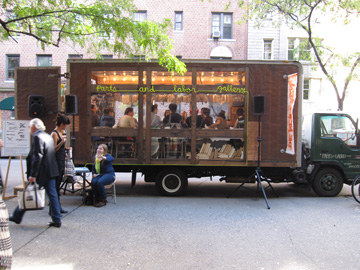
“By Any Name: Institutional Memory at The New School.” Installation view, with class in progress. The New School, October 2009.
We’ve tried to be very specific in defining the medium of “public event,” adjusting it to each topic and breaking the mold of standard public programs. We’ve hosted artist lectures as performances; we’ve had two-hour digital exhibitions in connections with panels; and we’ve assembled a sort of faculty blog in response to our programs, creating a modern version of the chorus.
We moved William Pope.L’s Black Factory to Union Square rather than have it here on campus. On the occasion of The New School’s 90th anniversary, we organized an exhibition and many events called “By Any Name: Institutional Memory at The New School,” all hosted in the relatively remote and safe environment of a van, parked outside the university’s main building. This discussion was thus liberated from institutional constraints, yet connected to them. Sometimes irreverence sneaks in, for instance, during a summit of dignitaries from real and imagined countries presented on occasion of Bush’s creation of a Department of Homeland Security (in collaboration with Cabinet magazine). Or when we engage fortunetellers to introduce other forms of scholarship.
The 2008 exhibition, OURS: Democracy in the Age of Branding, examined the idea of democracy as a consumer product, exported to advance an expansionist agenda as it promises freedom and immediate gratification. Such an exhibition had to take into account the rhetoric at The New School itself around the university’s own support of democratic rights and freedom during World War II and now. We called on the Yes Men, who delivered a provocative installation that raised critical questions. Numerous other commissioned, works, workshops, roundtables, design charrettes with students, and lots of public events complemented the show.
The Deep Horizon oil spill is of such magnitude that it also called for an event of a different kind: rather than focus exclusively on the environmental impact of the disaster, we presented “The Oil Spill,” where the spill was dissected as evidence of a much broader conditions. Some of the best scholars from across The New School came together and analyzed it from the points of view of labor rights, fashion (protective gear), media happening, literature (with such innocuous poetic terms as “plume”), art (still photography versus live video feeds), geology, public health, and international relations.
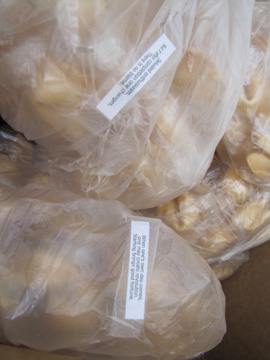
“It Happened Tomorrow: Probabilities, Predictions and Prophecies,” Lin + Lam Fellowship project presentation. Custom-made fortune cookies.
5. What projects do you see in the future of the VLC? What direction would you like to take the organization in?
The vexing and exciting challenge is to define, create, and occupy a position where the center is nimble, swift, and responsive at the same time as it is substantial and generative. We will increasingly engage in the actual teaching process at The New School, with its 9,000+ students. We will expand our publication programs, next with the book on speculation and a series of position papers. Since its founding in 1992, the VLC has, to some extent, defined and framed the discourse on aesthetic and political practice and as we head towards our third decade, we are launching a comprehensive assessment of our history, with the goal of activating our archives. And we plan to augment the fellowship program with an additional initiative.
I would be thrilled if our programs, existing and future, would lead to more collaborations with like-minded places.



